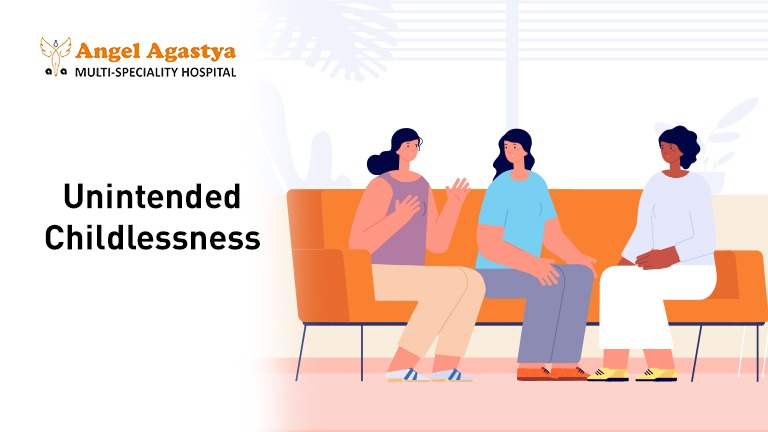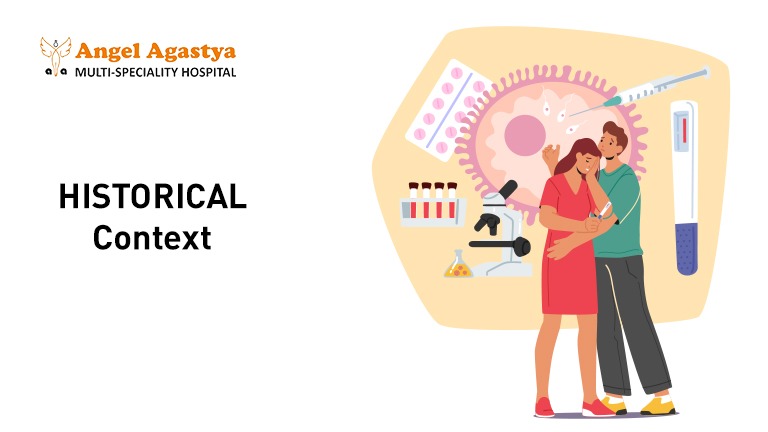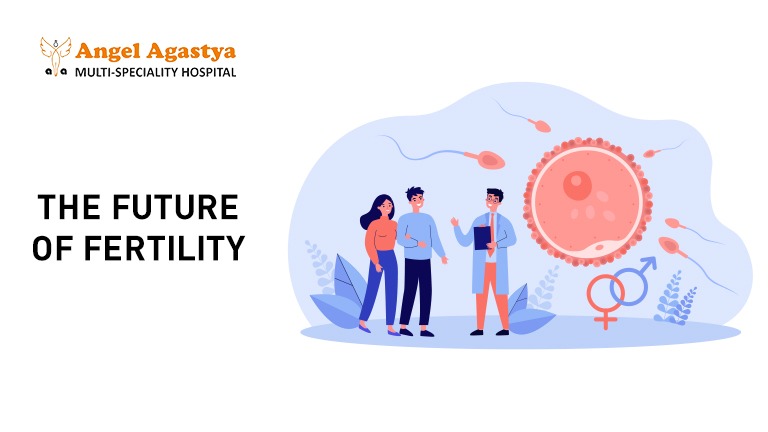Introduction:
The longing to be a parent, a fundamental human desire woven into the fabric of countless stories and traditions across societies, can be profoundly impacted by the experience of unintended childlessness.
While this experience happens to people everywhere, how it affects individuals and how society responds is uniquely shaped by the ever-changing mix of social expectations, cultural norms, and medical progress throughout history.

Exploring history allows us not only to recognize that this has been a challenge for people for a long time but also to see the significant changes that have happened. We can see how society’s attitudes, from looking down on and isolating people to showing sympathy and support, have changed over time.
Additionally, we can witness the amazing advancements in medical technology, offering new ways to become parents that were impossible before. This historical perspective not only helps us feel compassion and understand people facing this challenge but also informs current discussions and efforts to support those experiencing unintended childlessness.
By remembering the past, we can build a more inclusive and supportive future for individuals and families on the journey toward parenthood.
Historical Context of Unintended Childlessness:
Throughout history, societies have held complex and ever-shifting views on couples who couldn’t have children despite wanting to. In earlier times, many cultures blamed women entirely for childlessness, leading to unfair stereotypes and societal pressures. Over time, however, this perception has begun to shift, acknowledging the shared journey of both partners in this experience.

Early medical practices related to unintended childlessness often reflected the limitations of the time, with traditional remedies and superstitious beliefs dominating the landscape. This lack of scientific understanding and effective treatments highlights the challenges faced by individuals in the past. Approaching these historical perspectives with sensitivity is crucial, acknowledging both the limitations of the time and the resilience of those who persevered in the face of such difficulties.
How Medicine Transformed the Journey to Parenthood:
Medical science has revolutionized our understanding and treatment of unintended childlessness. Traditional methods, often based on beliefs and limited knowledge, have gradually given way to more scientific approaches. Diagnostic tools like pelvic exams and hormone tests now help pinpoint the causes of infertility, while advancements in treatments like fertility drugs and assisted reproductive technologies (ART) such as in-vitro fertilization (IVF) offer new hope for couples struggling to conceive.
However, societal expectations and cultural-religious beliefs continue to shape the evolving landscape of unintended childlessness treatment. While some cultures welcome openness and embrace new technologies, others may have different perspectives on the ethical implications of certain treatments. This underscores the need for ongoing dialogue and sensitive approaches that are culturally informed.

Beyond Science: Listening to the Stories of Unintended Childlessness
By solely focusing on medical and technological advancements, we risk overlooking the rich tapestry of lived experiences surrounding unintended childlessness. To gain a more subtle understanding, we must amplify the diverse voices of individuals and communities who have navigated this challenging journey across different social classes, ethnicities, and genders.
One way to achieve this is through analyzing historical trends in data, such as birth rates and access to healthcare resources, which can reveal differences faced by different groups in dealing with unintended childlessness. Additionally, exploring artistic expressions like literature, paintings, and sculptures can offer valuable insights into the cultural perceptions and lived experiences associated with unintended childlessness throughout history.

Furthermore, delving into fictional narratives, particularly historical fiction, allows us to create a space for empathy and understanding by exploring potential scenarios and highlighting the diverse challenges faced by individuals and couples from different social backgrounds experiencing unintended childlessness. Finally, analyzing how fictional characters grappling with unintended childlessness have been portrayed can shed light on evolving societal attitudes and cultural understandings associated with this experience.
By employing these methods, we can move beyond a singular narrative and embrace the multifaceted reality of unintended childlessness throughout history.
Myth vs. Reality: Unintended Childlessness and Medical Advancements
While medicine has made significant strides in treating unintended childlessness, some myths persist. Let’s clear the air on a few common misconceptions:
Myth #1: Age is the only factor in fertility.
Reality: While age can play a role, it’s not the sole determinant. Underlying medical conditions, lifestyle habits, and even partner health can contribute to fertility challenges.
Myth #2: Fertility treatments always work.
Reality: Unfortunately, no fertility treatment guarantees success. Success rates vary depending on factors like age, cause of infertility, and the specific treatment used.
Myth #3: Fertility treatments are out of reach for most people.
Reality: The cost of fertility treatments can be a barrier, but options are becoming more available. Insurance coverage is expanding, and financial assistance programs exist.
Myth #4: Fertility treatments are unnatural.
Reality: Assisted reproductive technologies (ART) can be a lifeline for many couples struggling to conceive. These treatments simply provide an alternative path to parenthood.
Myth #5: There’s a one-size-fits-all approach to fertility care.
Reality: The best treatment plan is personalized. A fertility specialist will consider individual factors and medical history to recommend the most appropriate course of action.
By understanding these myths, individuals facing unintended childlessness can make informed decisions about their healthcare options. Remember, open communication with your doctor is crucial for exploring the best path forward.
The Future of Fertility:
The future of having children for those struggling with unintended childlessness holds exciting possibilities. New technologies like gene testing, personalized care, and improved fertility treatments are emerging. These could offer more specific and individual treatment plans, potentially increasing success rates and bringing hope to those facing difficulties getting pregnant.

However, the ethics of these new technologies are most important. We need to carefully consider and address issues like who can afford and access them, potential risks, and preventing unfairness. It’s crucial to ensure everyone has a fair chance to benefit from these advancements, creating a healthcare system that supports the diverse needs of individuals and couples building families, even when faced with the challenge of unintended childlessness.
Summary:
Exploring the historical context of unintended childlessness is a journey of empathy and understanding. It allows us to appreciate the strength of individuals and couples who have navigated this challenge throughout history, paving the way for advancements in medicine and a more inclusive environment for those facing similar struggles today. As we move forward, promoting continued support, ethical considerations, and open dialogue around access and inclusivity remain critical aspects of ensuring everyone has the opportunity to experience the joy of creating a family, regardless of the unforeseen obstacles they may encounter throughout their journey, including unintended childlessness.
FAQs:
1. How have societal views on childlessness changed, impacting the experience?
- Past: Emphasis on women’s fertility, potential discrimination.
- Present: Shared journey, focus on support for both partners.
2. How did medical practices for childlessness differ historically?
- Past: Limited knowledge, traditional remedies, ineffective treatments.
- Present: Advanced diagnostics, fertility drugs, and assisted reproductive technologies (ART).
3. How did cultural/religious beliefs shape responses to childlessness historically?
- Beliefs can influence blame, discrimination, and treatment options.
- Need for sensitivity and culturally competent support.
4. What challenges did couples battling childlessness face in different eras?
- Limited healthcare access, societal discrimination, emotional impact, and financial constraints.
5. How have supporting groups impacted the conversation about childlessness?
- Challenged discrimination, raised awareness, and promoted policy changes for better support.
6. What are ethical concerns regarding new reproductive technologies?
- Access & equity, cost & affordability, informed consent, potential risks & uncertainties.
7. How can we improve access to fertility treatments for inclusivity?
- Policy changes for lower costs and insurance coverage.
- Financial assistance programs.
- Raising awareness and education.
- Culturally sensitive approaches to care and communication.
8. What historical examples exist of overcoming childlessness? (Respect privacy!)
- Approach historical accounts with critical awareness and avoid continuing stereotypes.
- Acknowledge diverse experiences and journeys.
9. What can we learn from history to better support those facing childlessness today?
- Foster empathy and understanding.
- Recognize the need for ongoing support, both emotional and practical.
- Advocate for equitable access and inclusivity.
10. Where can I find more information about the history of childlessness and family planning?
Explore books/articles, museums/archives, documentaries/films, and online resources (prioritize reliable sources with sensitive topics).

